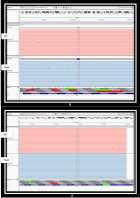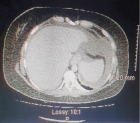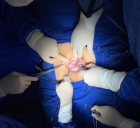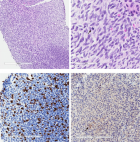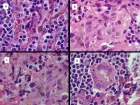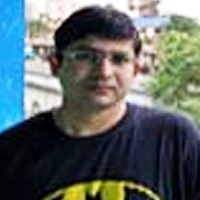About Autonomous University of Barcelona
Autonomous University of Barcelona
Articles by Autonomous University of Barcelona
The effect of cognitive strategies of association and dissociation on central nervous activation: A controlled trial with long distance runners
Published on: 11th October, 2017
OCLC Number/Unique Identifier: 7286431108
The purpose of the present study was to experimentally assess the effect of cognitive strategies of association and dissociation while running on central nervous activation. A total of 30 long distance runners volunteered for the study. The study protocol consisted on three sessions (scheduled in three different days): (1) maximal incremental treadmill test, (2) associative task session, and (3) dissociative task session. The order of sessions 2 and 3 was counterbalanced. During sessions 2 and 3, participants performed a 55 min treadmill run at moderate intensity. Both, associative and dissociative tasks responses were monitoring and recording in real time through dynamic measure tools. Consequently, was possible to have an objective control of the attentional. Results showed a positive session (exercise+attentional task) effect for central nervous activation. The benefits of aerobic exercise at moderate intensity for the performance of self-regulation cognitive tasks are highlighted. The used methodology is proposed as a valid and dynamic option to study cognitions while running in order to overcome the retrospective approach.
Differences between traditional Visualization and Virtual reality on motor performance in novel climbers
Published on: 6th February, 2018
OCLC Number/Unique Identifier: 7347073164
This paper analyses the effect of virtual reality visualization (VRV) on climbers, with respect to the traditional visualization methodology. The study sample was made up of 21 novel climbers: Control Group CG (N=7), Traditional Visualization Group TVG (N=7) and Virtual Reality Group VRG (N=7). In order to implement the mental imagery through virtual reality, a 360º Ricoh Theta S camera and a pair of Woxter Neo VR1 goggles were used. The data analysis was carried out with a simple ANOVA of three means. No statistically significant differences were found. The results are discussed and future lines of research are established.
Usefulness of salivary cortisol as a marker of secondary adrenal insufficiency in paediatric patients
Published on: 7th April, 2021
OCLC Number/Unique Identifier: 9026719998
Background: The main cause of adrenal insufficiency (AI) in paediatric patients is prolonged treatment with corticosteroids. Determination of plasma cortisol (PC) during ACTH test is the most used adrenal function indicator in clinical practice. However, determination of salivary cortisol (SC), a simple test especially useful in children in order to avoid invasive procedures, can be used as an alternative technique for the diagnosis of adrenal disease.
Methods: A two-year prospective study (January 2014-January 2016) in paediatric patients (2-18 years of age) treated with corticosteroids for more than fifteen days, who were investigated for suspected AI. Low-dose ACTH test was used to determine adrenal function and samples for SC and PC were obtained simultaneously in basal situation and during the test (at 30, 60 and 90 minutes).
Results: 230 samples (118 PC-112 SC) of 30 studies belonging to 20 patients (4 males), mean age 10.93 years ± 3.69 SD. Pearson’s correlation coefficient showed a positive correlation between PC and SC (r = 0.618, p < 0.001). All the studies with some determination of PC higher than 18 μg/dL (n = 8) had a SC peak higher than 0.61 μg/dL with a specificity of 66.67% and a sensitivity of 93.94% (ROC analysis).
Conclusion: Measurement of SC is a less invasive, easier and quicker test than PC to measure plasma free cortisol levels. In our study, a SC peak in low-dose ACTH test higher than 0.61 μg/dL was able to discriminate patients without AI, and proved to be a useful tool in the initial evaluation of children with suspected AI.Introduction
The activation of the hypothalamic-pituitary-adrenal axis in response to critical illness and the resulting release of cortisol from the adrenal cortex are essential to stress adaptation. Adrenal insufficiency (AI) is described as the inability of adrenal glands to produce an appropriate hormonal secretion not only under stress but also in basal situation. Therefore, a low baseline plasma cortisol (PC) (< 5 μg/dL) and a poor cortisol response to stimulation with exogenous adrenocorticotropic hormone (peak < 18 μg/dL) are some of the defining criteria of this condition [1,2]. It is well known that the main cause of AI in paediatric patients is prolonged treatment with exogenous corticosteroids, which is an iatrogenic cause derived from the increasing complexity of paediatric pathologies and the increased use of prolonged high-dose corticosteroid therapy.
In clinical practice, adrenal function is usually assessed by the total PC (determined by low-dose ACTH test). This implies the placement of a vascular access which is often a traumatic experience for children.
PC includes protein-bound fraction and serum-free cortisol. The latter constitutes the biologically active form of the hormone and is responsible for glucocorticoid activity on peripheral organs. Most of the circulating cortisol is bound to plasma proteins (over 90%), such as cortisol-binding globulin (CBG) and albumin, whereas only about 10% of circulating cortisol is free. Hence, the measurement of plasma-free cortisol level has been considered more representative of adrenal function (especially in critically ill adults and children) [1,2], because some conditions, such as hypoalbuminaemia or hypoproteinaemia (frequent in critically ill patients or in patients with cirrhosis), may lead to misinterpretation of adrenal function with an overestimation of the prevalence of AI. But the direct measurement of free PC is a laboratory-dependent and time-consuming procedure that is not available for routine use. Salivary cortisol (SC) is one of the several indirect methods available to determine free PC [3], as SC levels accurately reflect free PC [4] even in cases of hypoalbuminaemia or CBG abnormality [1,5]. For this reason, in the last years, this technique (SC) has been introduced as a non-invasive tool in the diagnosis of adrenal cortical disorders, for its simplicity and applicability in the paediatric population. However, few studies to date have evaluated the usefulness of SC as a diagnostic method in children with AI. No interactions between exogenous corticoids and SC have been described [6].
The aim of the present study was to assess the usefulness of determining salivary cortisol levels as a diagnostic tool in children with suspected secondary iatrogenic AI.

If you are already a member of our network and need to keep track of any developments regarding a question you have already submitted, click "take me to my Query."






